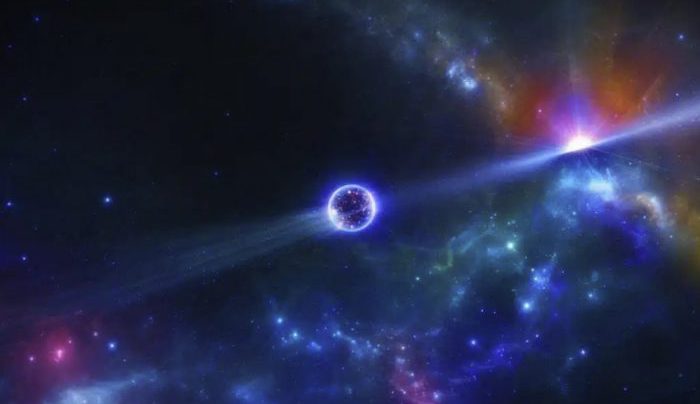Finnish scientists achieve a historic breakthrough, visually confirming two colossal black holes locked in a cosmic waltz 5 billion light-years away.
In a monumental scientific leap, Finnish astronomers have captured the first-ever radio image of two supermassive black holes orbiting each other, confirming a mystery that has fascinated astrophysicists for decades. The discovery, published in The Astrophysical Journal on October 9, 2025, cements the existence of binary black holes — celestial giants whose violent gravitational embrace shapes galaxies and, ultimately, the universe itself.
The pair resides inside a luminous quasar known as OJ287, located a staggering 5 billion light-years away in the constellation Cancer. The research was spearheaded by Professor Mauri Valtonen of the University of Turku, Finland, who described the moment as “a triumph of human curiosity and cosmic vision.”
“For the first time, we have imaged two black holes circling one another,” Valtonen said, explaining that their presence was revealed by immense particle jets emitted from each core — the blazing signatures of otherwise invisible cosmic monsters.
The breakthrough was made possible by the RadioAstron satellite, whose antenna stretched halfway to the Moon, capturing images nearly 100,000 times sharper than Earth-based telescopes. The quasar OJ287 has intrigued scientists since 1982, when Finnish astronomer Aimo Sillanpää noticed its brightness fluctuated every 12 years — a pattern suggesting two massive black holes orbiting and colliding through a shared galactic core.
Until now, the existence of such pairs had only been inferred through gravitational waves — ripples in spacetime first detected in 2015. This new image is the first visual proof, providing unprecedented insight into how galaxies merge and evolve.
“These black holes are perfectly dark,” Valtonen noted, “but their power can be seen through the blazing gas and light around them — the very heartbeat of the universe.”
The discovery not only validates decades of theoretical predictions but also opens the door to understanding the cosmic architecture that holds galaxies — including our own Milky Way — together.





